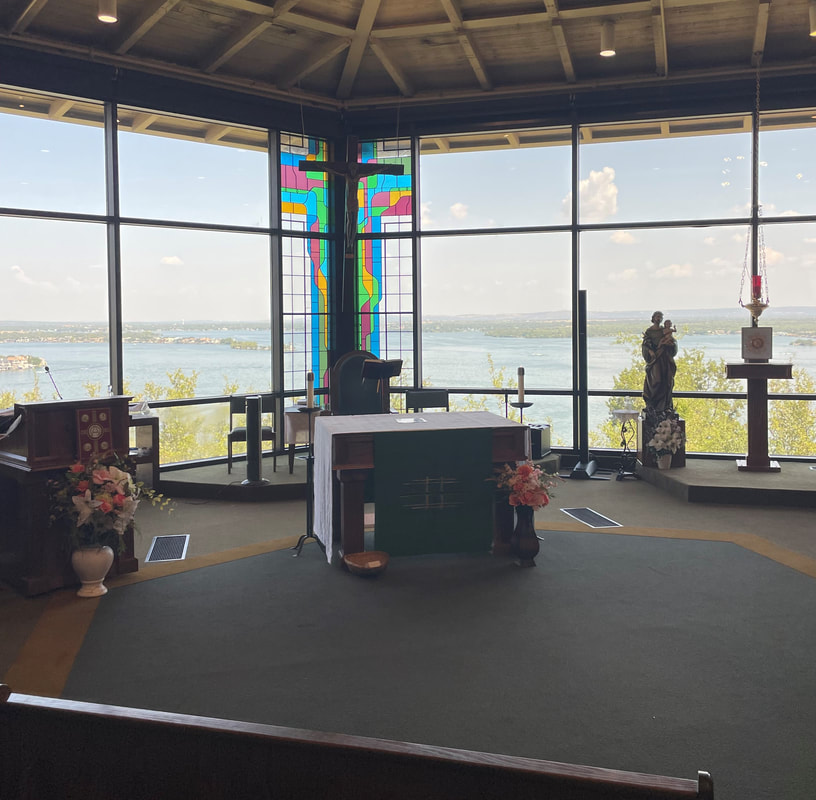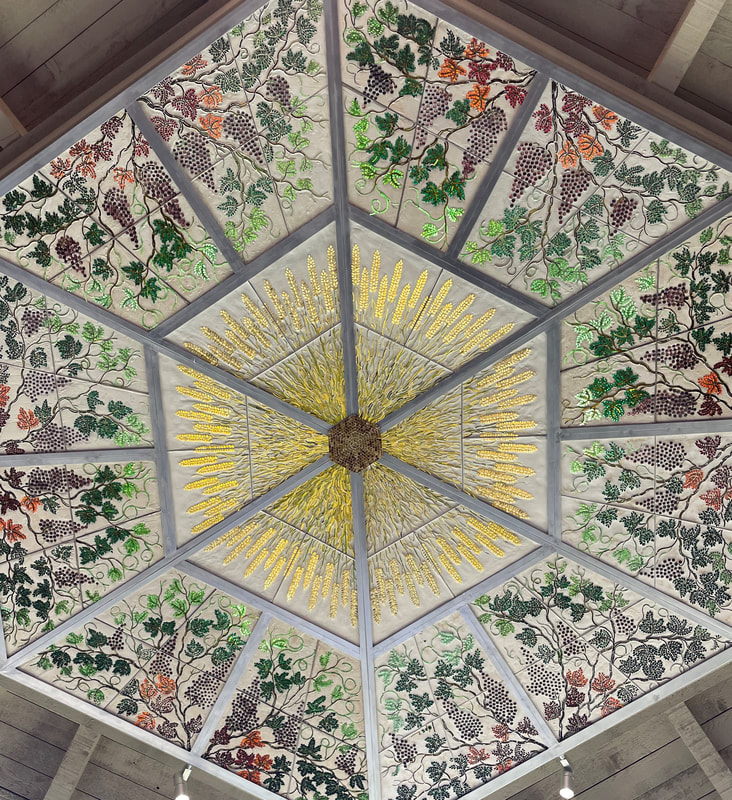|
One of the easiest ways to help us see the sacrifice of the Mass with fresh eyes and give us renewed vigor is to attend Mass somewhere other than our regular parish. Not only can we hear the homily given by a different preacher, we can also meet new brothers and sisters in the faith as well as be instructed by the sanctuary itself. As we know, everything in our holy spaces is full of meaning, from the statutory to the altar to the design and layout of the building itself. The architecture and design of every Catholic Church is highly intentional and theological and can illuminate an aspect of the Mass in a new way. This past weekend, I had the opportunity to attend a new-to-me church, and that was exactly what I experienced. I appreciated the wisdom of the pastor, I was welcomed by several parishioners and I was especially captivated by the rather striking sanctuary. This particular sanctuary, St. Paul the Apostle in Horseshoe Bay, Texas, followed closely the words of the Catechism, which says that “the ornamentation of a church should contribute toward its noble simplicity rather than to ostentation. Moreover, in the choice of elements attention should be paid to authenticity.” (CCC 292) The architect got it right, on both counts. The artist who was commissioned to create works of sacred art for the sanctuary, Sister Mary Peter Tremonte, O.P., made it easy for us to contemplate the work of God through the practice of Visio Divina, “divine seeing,” or praying with art. Jesus the Light of the World and the Living Water As you can see from the picture of the sanctuary (above), the backdrop of the altar is God’s own creation. Behind the altar is a large crucifix, animated by blocks of colored glass reflecting the Light of the World on the cross, while behind the blue sky stretches out, opening widely above Lake LBJ, which is made up of the joining of two rivers. Because the lake wraps around both sides of the altar, it looks as if the words of Genesis are being alluded to. Genesis says “A river rises in Eden to water the garden; beyond there it divides and becomes four branches.” (Gen 2:10) The reference to “four branches” reminds us that the fertilizing, irrigating water that will go out to cleanse the entire world, all four corners of it, arises in the temple, originally a garden, of God. We know that Jesus is the Living Water, whose blood flowed from him, mixed with water, at his death on the cross and that same mixture of blood and water flows forth across the world in every Mass. Jesus the Bread Come Down from Heaven
The sanctuary visibly showed us Jesus the Light and Jesus the Living Water, and in another piece of sacred art, it also reminded us that Jesus is the Bread Come Down from Heaven. At the apex of the roof is a beautiful work of original art, a mosaic that displays a sunflower-like sun reaching out. The petals of the sunflower, a symbol of obedience, take on the action of a sun as its rays turn into stalks of golden wheat, pointing in every direction. Just beyond the wheat is a green vine, the classic symbol of eternal life used since the earliest churches, joining with full-bodied purple grapes and orange and brown leaves, signifying the harvest. This work of art reminds us that the Eucharist which we gathered that Sunday to participate in, the bread of thanksgiving and the cup of salvation, invites us to become what we receive, to continue God’s work. Everything in this small space pointed to the glory of God, seen in both his creation outside and in the work of human hands, inside. One last note. When I read the history of this particular church, I was amused, but not surprised, to find that it originated from a gift of land and money donated by some early parishioners, who owned property on this steep incline. Guess what they had named this large hill? Thanksgiving Mountain.
0 Comments
|
The BlogDisclaimer:
The images on this website are either my own or are used under the Creative Commons license. No images have been edited, shared, or adapted. A link to each work that I do not own is provided at the bottom of the page. CC License: Archives
March 2024
Categories
All
|





 RSS Feed
RSS Feed
